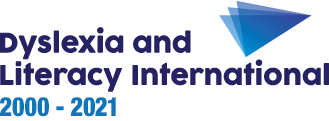Dyslexia is one of a number of profiles which are termed either Specific Learning Difficulties (SpLD), Learning Disabilities (LD), learning differences or neuro-diverse profiles. Symptoms of dyslexia – difficulties with reading, spelling and writing – occur in about 85 % of all SpLD.
The latest research indicates that co-occurrence between such profiles is more the norm than the exception (e.g. Profile of Dyslexia and Dyscalculia/Math learning Difficulties; Profiles of Dyslexia and Dygraphia; Profile of Dyslexia and ADHD; Profile of Dyslexia and Dypraxia).
Therefore, whilst this course focuses on the profile of dyslexia, it also embraces an inclusive philosophy using Universal Design for Learning (UDL) as its basic framework. This means that strategies and techniques presented in this course are also beneficial for all.
In line with the literature, teachers who piloted the course noted that the suggestions, tools and techniques presented in this training do not only address the learning needs of children with dyslexia, but are also beneficial for all children in any classroom.
Dyslexia is a Greek word meaning difficulty (dys) with the written word (lexia) and affects between 10-15% of individuals regardless of culture, class or gender.
Students with dyslexia in your class may appear to be slow, when in fact they are not. What happens is that their abilities are masked by their challenges accessing verbal-visual print (traditional reading), slow processing speed, working memory, auditory sequential memory, and sometimes difficulties with oral language. Further, when they are trying to learn how to read, challenges which include phonemic skills, decoding, sight word vocabulary, and reading fluency inhibit their literacy development. As teachers, we are responsible to ensure that all students in our classroom can access our learning and that they learn how to read and write. Early educators need to address these two responsibilities by not only ensuring that their reading programme is structured and multi-sensory, but also that reading and writing do not inhibit access to learning. This introductory course addresses the latter more than the former.


